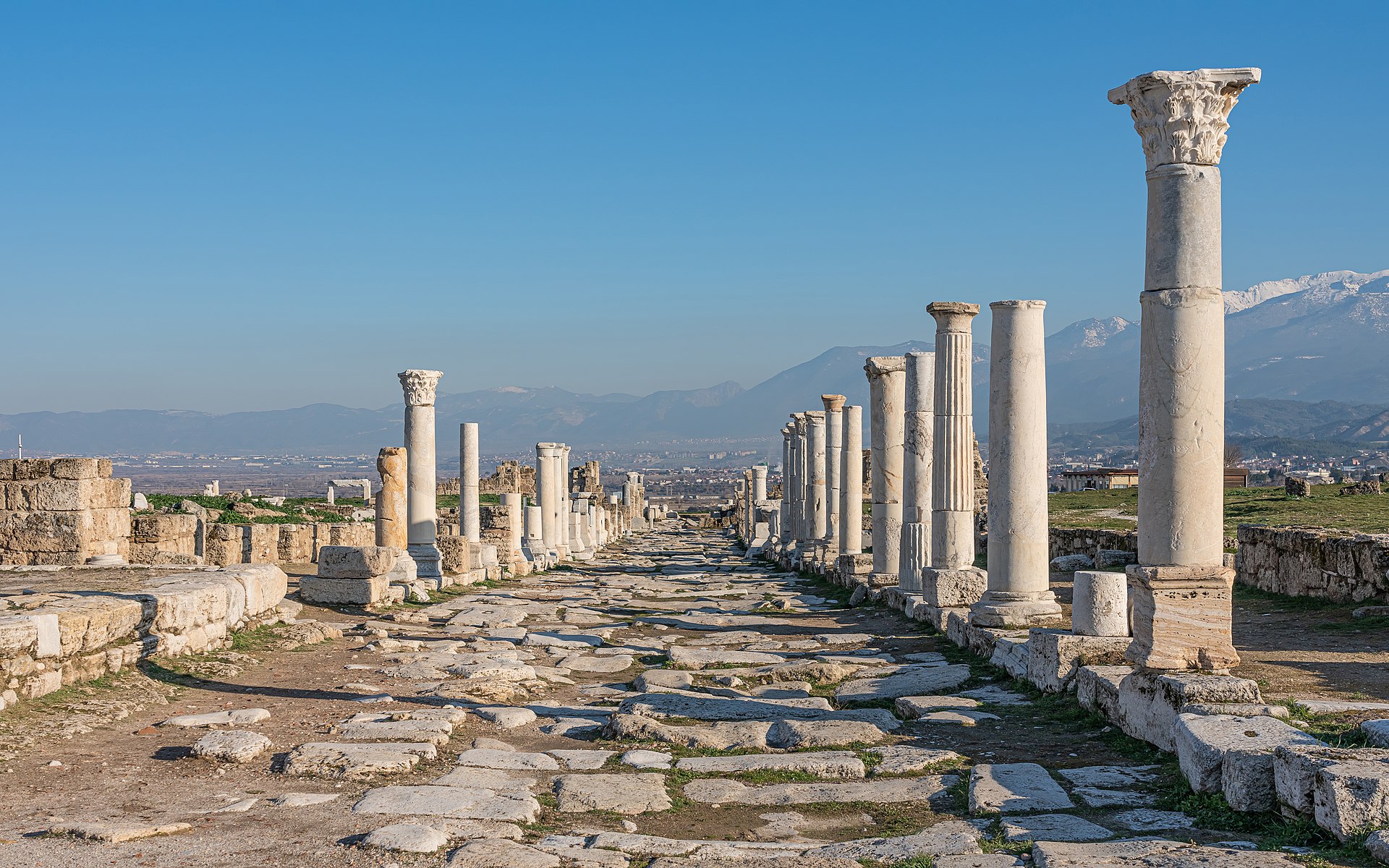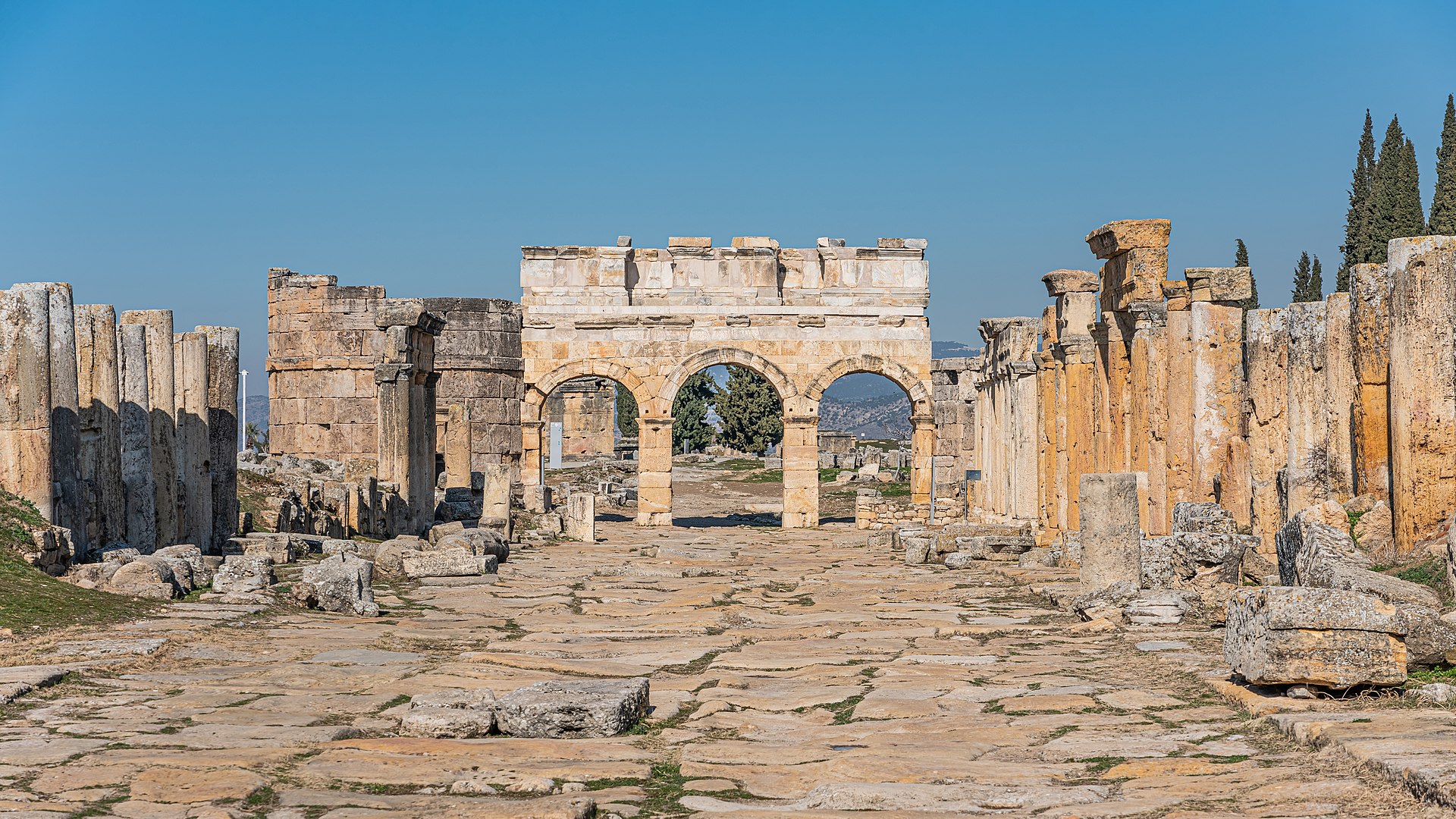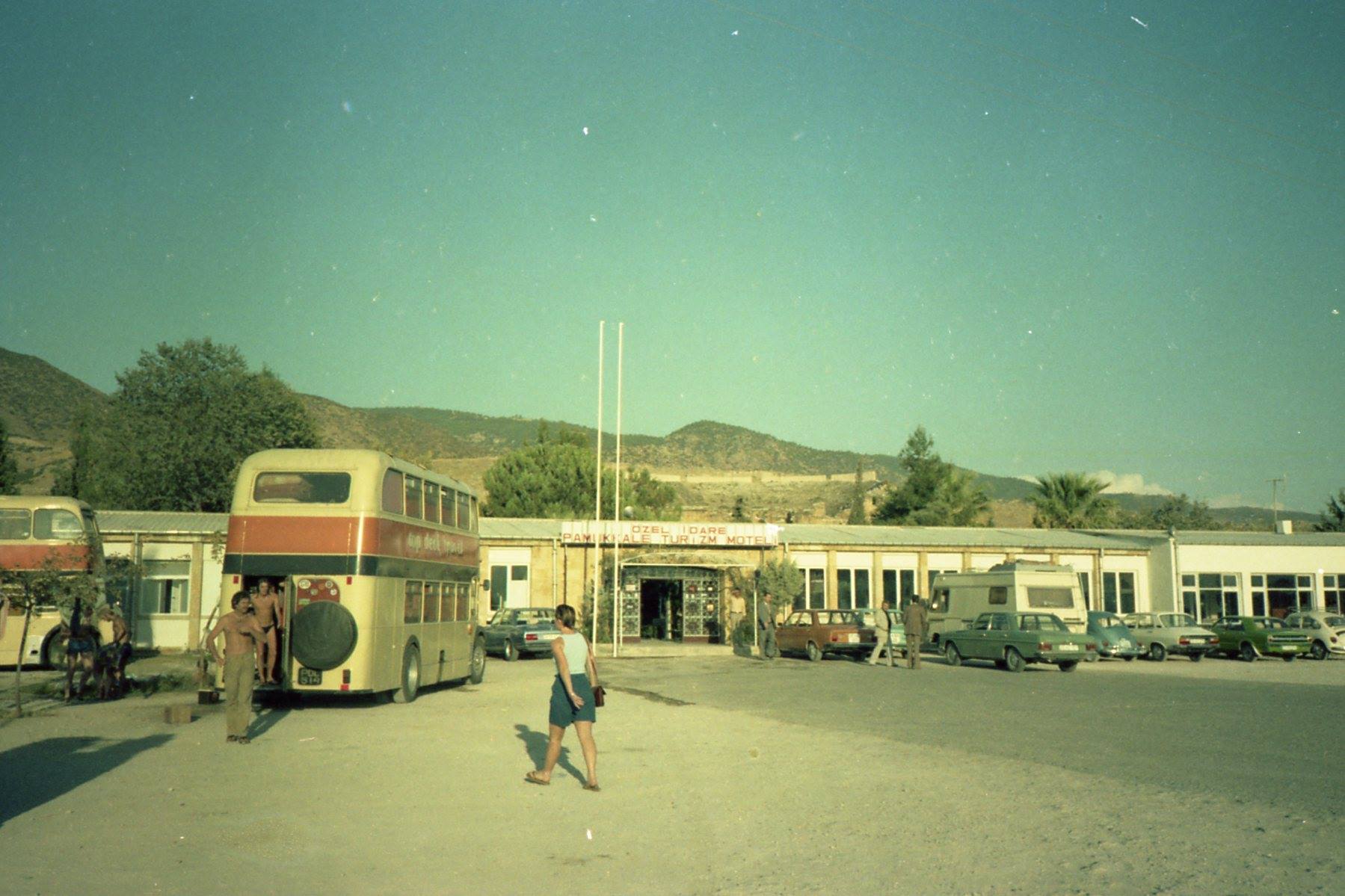
AsianOverland.net
Tour Guide - Itinerary
Asian Overland Sydney to London
Started 22/06/2022 Finished 21/06/2023365 Days ITINERARY
Day 145 date 13/11/2022KONYA to PAMMUKALE, TURKIYE
ASIANOVERLAND.NET SYDNEY TO LONDON DAY 281/145/57: PAMMUKALE, TURKIYE
13 November, 1980
Pamukkale, meaning "cotton castle" in Turkish, is a natural site in southwestern Turkiye famous for carbonate minerals left by the flowing of thermal spring water.
The ancient Greco-Roman city of Hierapolis (Holy City) was built on top of the limestone formation at Pamukkale, which is about 2,700 metres long, 600 m wide and 160 m high, and can be seen from the hills on the opposite side of the valley in the town of Denizli, 20 km away.
Known as Pamukkale or ancient Hierapolis, this area has been drawing visitors to its thermal springs since antiquity. The Turkish name refers to the surface of the shimmering, snow-white limestone, shaped over millennia by calcite-rich springs. Dripping slowly down the mountainside, mineral-rich waters collect in and cascade down the mineral terraces, into warm pools below.
Hierapolis was founded as a thermal spa early in the 2nd century BC within the Seleucid Empire and became a healing centre where doctors used the thermal springs as a treatment for patients. The city began minting bronze coins in the 2nd century BC with the name Hieropolis.
In 133 BC, when Attalus III died, he bequeathed his kingdom to Rome and Hierapolis became part of the Roman province of Asia. In AD 17, during the rule of Emperor Tiberius, a major earthquake destroyed Hierapolis..
Through the influence of the Christian Apostle Paul, a church was founded here while Paul and the Virgin Mary lived at Ephesus. The Christian Apostle Philip spent the last years of his life here. The town's Martyrium was built where Philip was crucified in AD 80.
During the 4th century, the Christians filled Pluto's Gate with stones, suggesting that Christianity was the dominant religion and had begun displacing other faiths in the area.
The Byzantine Emperor Justinian raised the bishop of Hierapolis to the rank of Metropolitan in 531. The Roman baths were transformed to a Christian basilica.
During the Byzantine period, Hierapolis continued to flourish and remained an important centre for Christianity.
People have visited Pammukkale for thousands of years, to bathe and swim in the thermal pools - very popular for Top Deck punters.
It’s amazing to swim and snorkel among the Greek and Roman ruins.
There are well-preserved Roman ruins and a museum on site, but the most popular ruins and columns for us, are the ones we can swim among.
By the end of the early 12th century, Anatolian Seljuks had established their dominance over Turkiye.
With the decline and the fall of the Konya-based Seljuks in the second half of the 13th century, they were gradually replaced by the Ottoman Empire during the 15th century.
© This work is copyright. Apart from any use permitted under the Copyright Act 1968, no part may be reproduced by any process, nor may any other exclusive right be exercised, without the permission of Peter Searle, peter@portseavillageresort.com; 1980-2024.
Website built by Justin O’Dea www.webdeveloperdocklands.com.au





